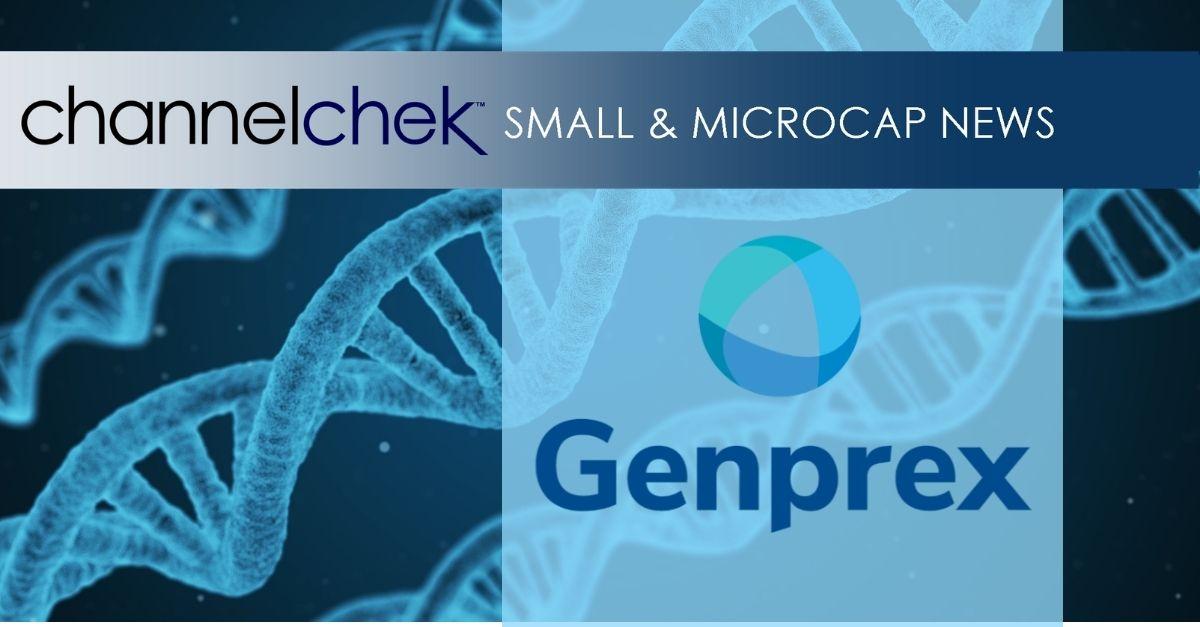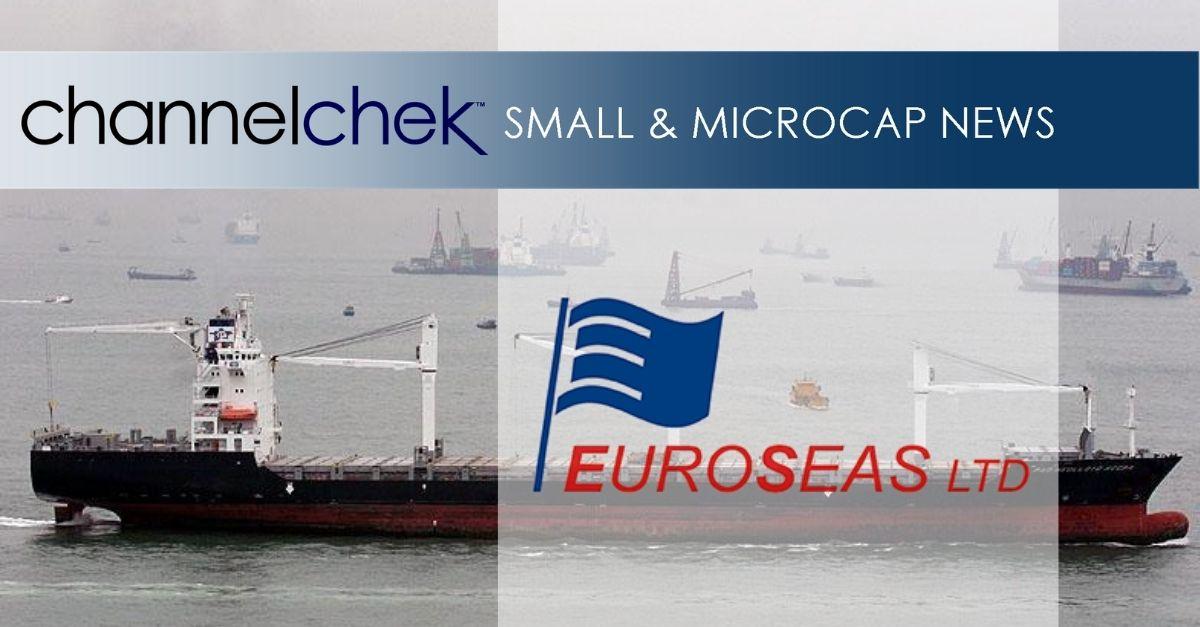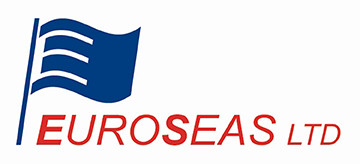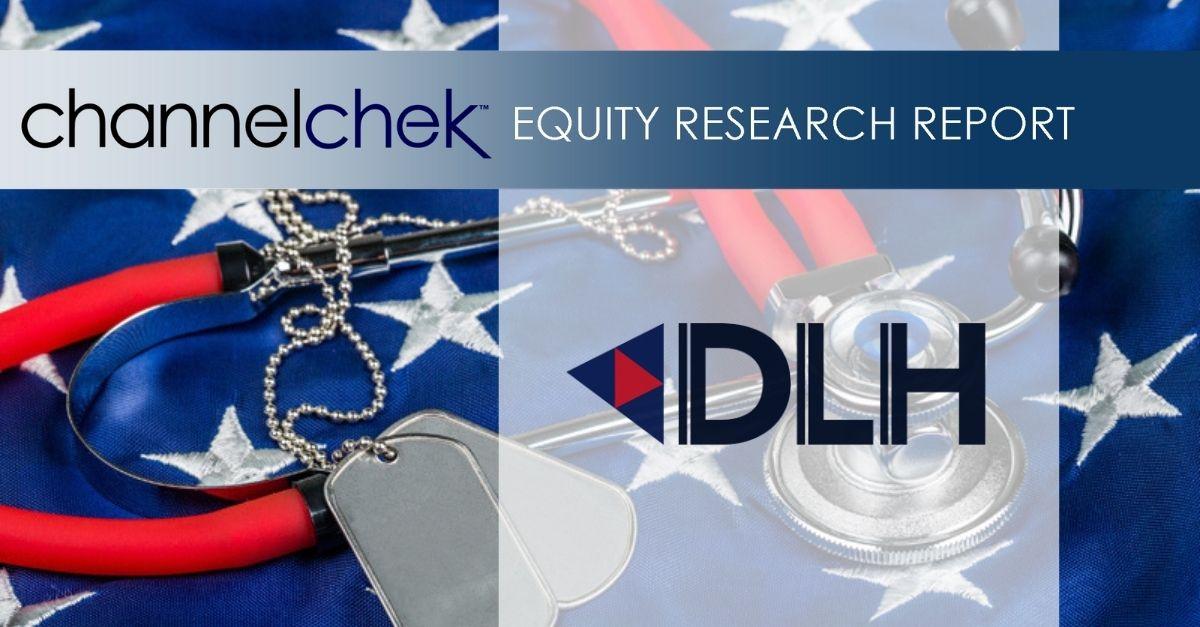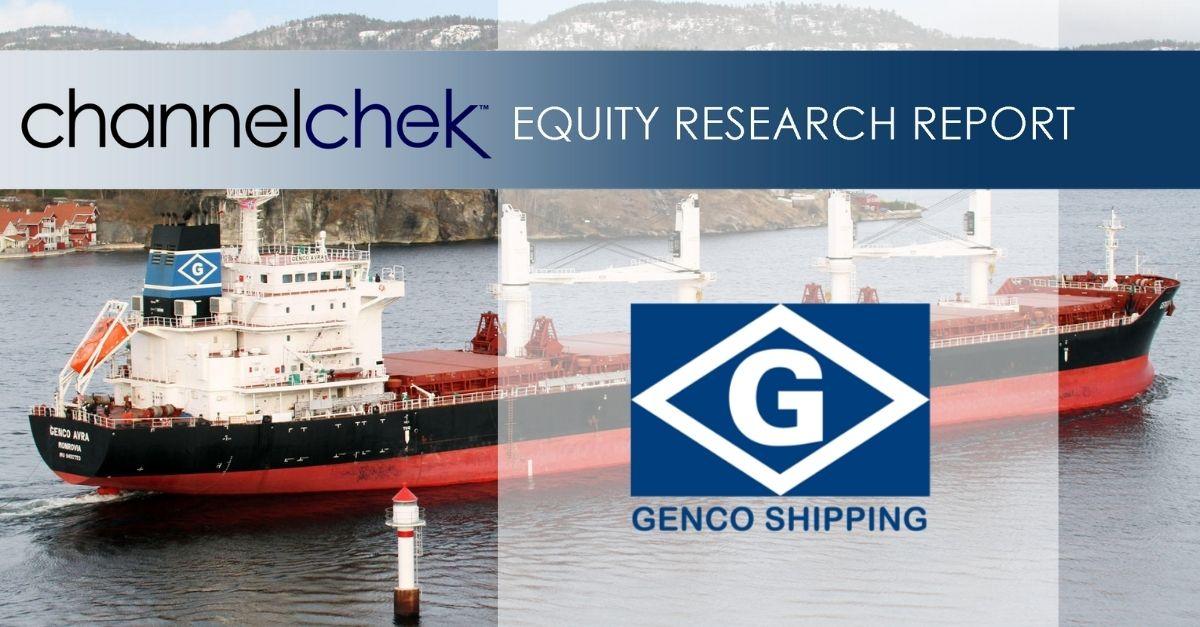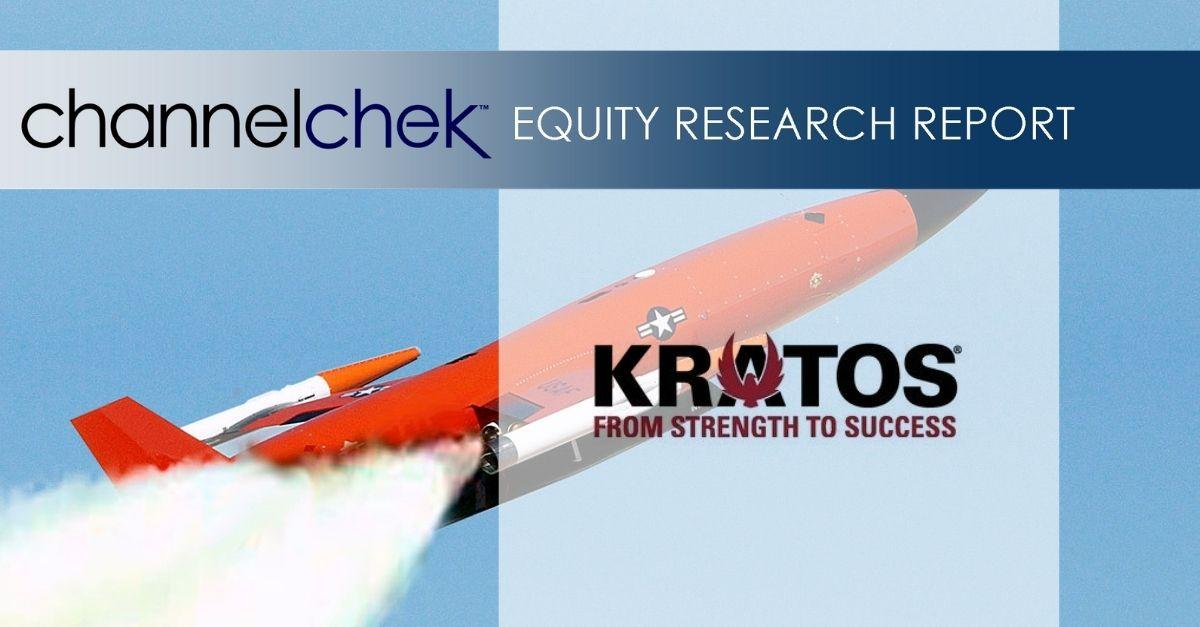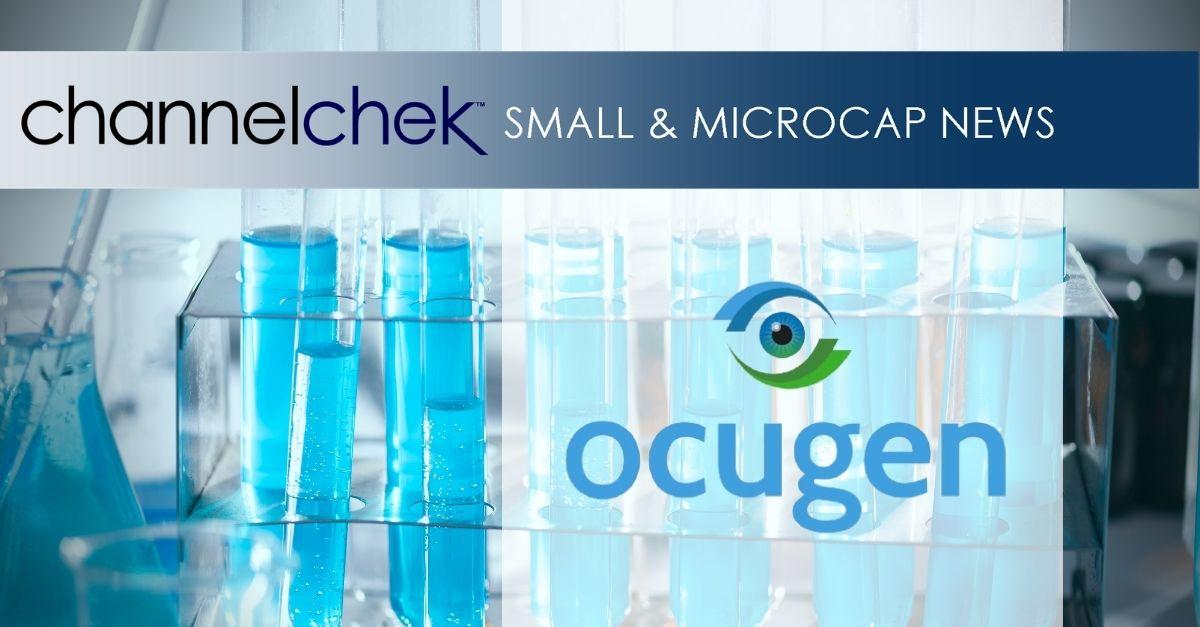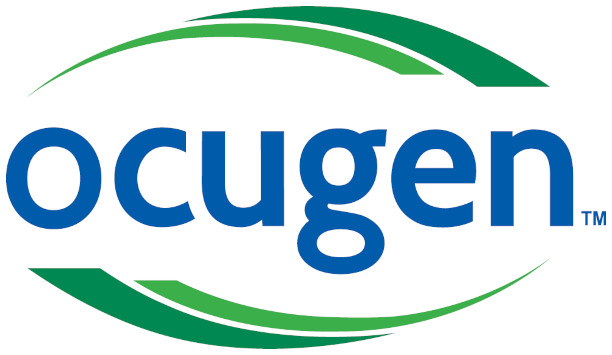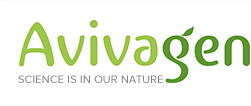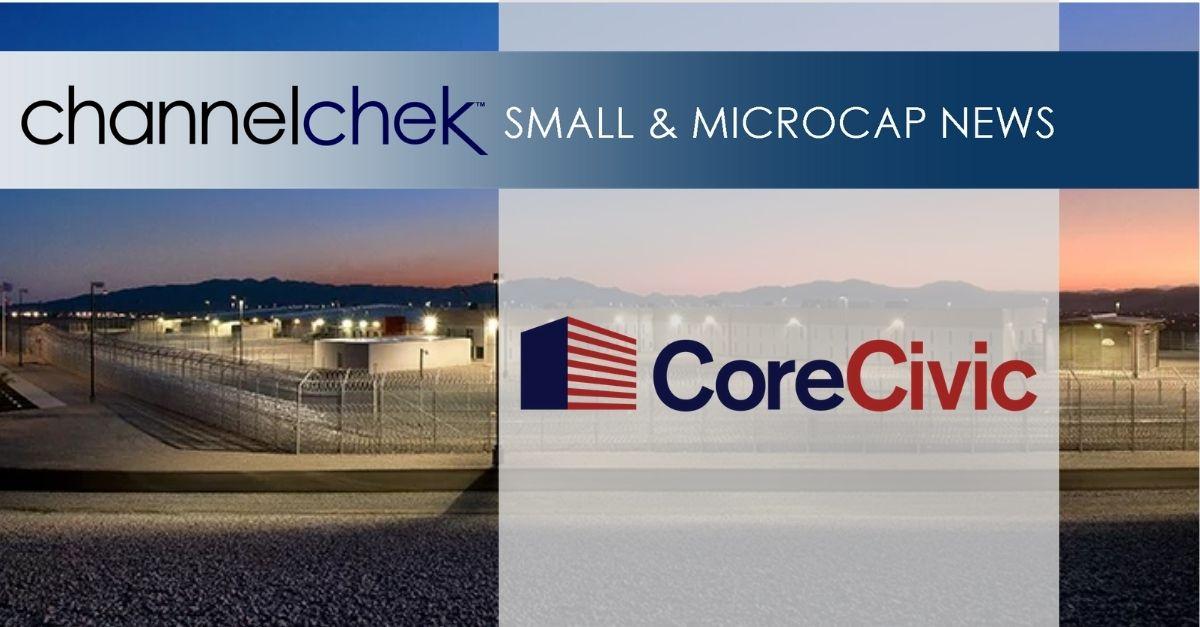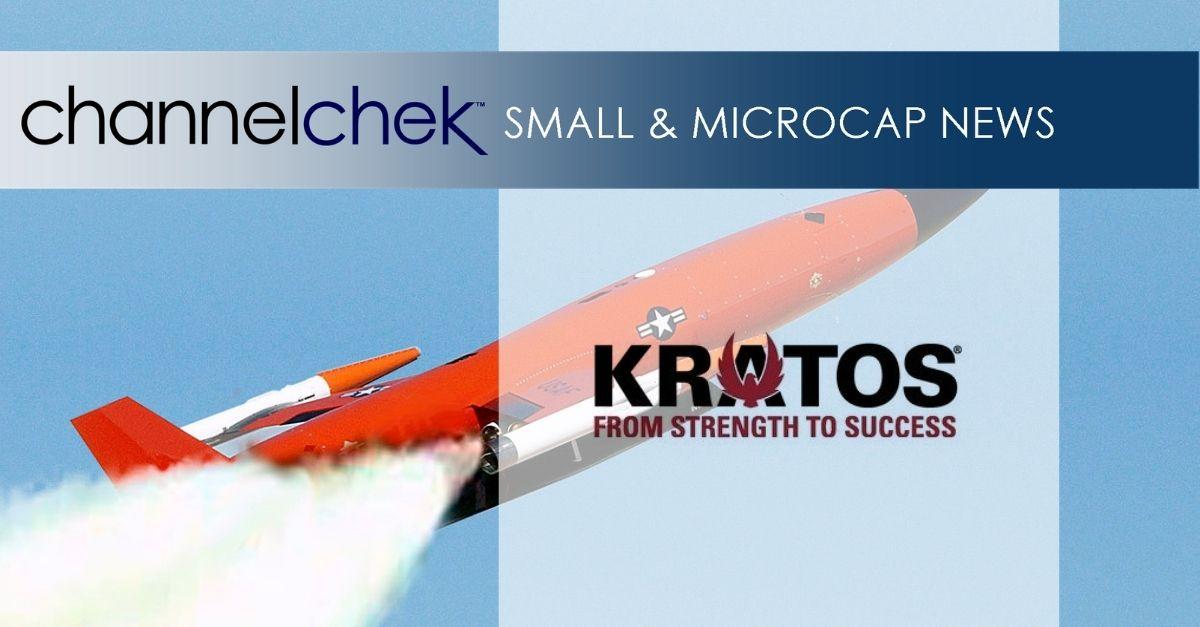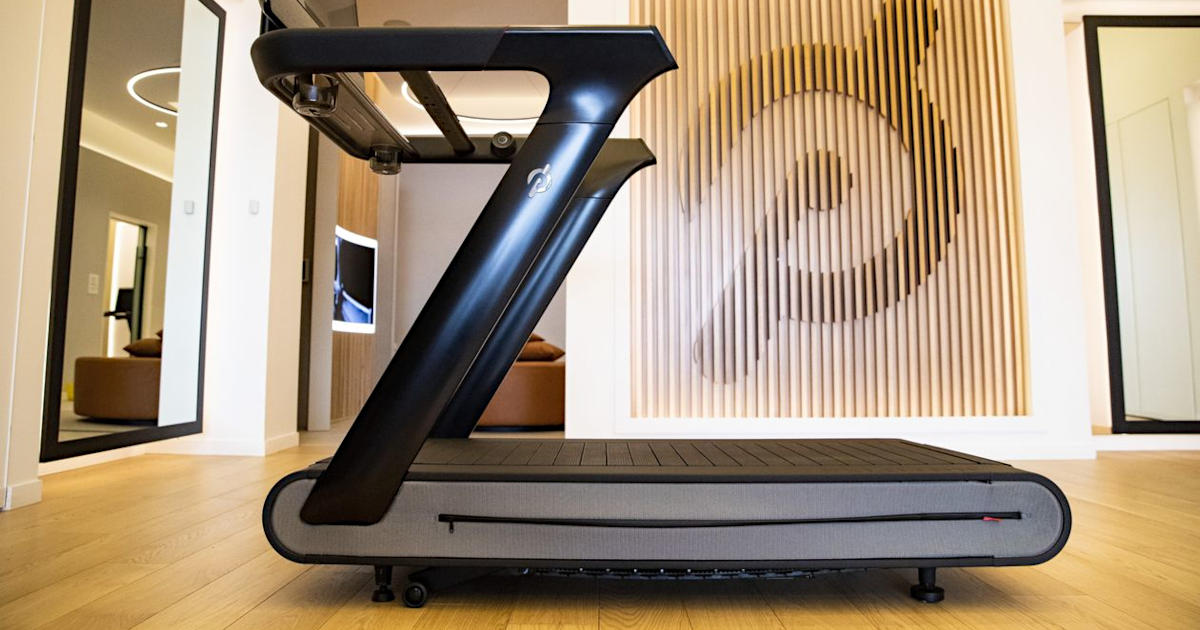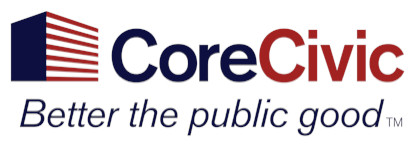
CoreCivic Reports First Quarter 2021 Financial Results
BRENTWOOD, Tenn., May 05, 2021 (GLOBE NEWSWIRE) — CoreCivic, Inc. (NYSE: CXW) (the Company) announced today its financial results for the first quarter of 2021.
Financial Highlights – First Quarter 2021
- Total revenue of $454.7 million
- CoreCivic Safety revenue of $409.8 million
- CoreCivic Community revenue of $23.7 million
- CoreCivic Properties revenue of $21.3 million
- Special items include income tax expense of $114.2 million primarily associated with change in corporate tax structure and $51.7 million for a shareholder litigation settlement
- Net loss attributable to common stockholders of $125.6 million
- Diluted loss per share of $1.05
- Adjusted diluted EPS of $0.24
- Normalized FFO per diluted share of $0.44
- Adjusted EBITDA of $96.3 million
Damon T. Hininger, CoreCivic’s President and Chief Executive Officer, said, “While our GAAP financial results were impacted by certain non-recurring charges related to our conversion from a REIT to a taxable C-corporation and a shareholder litigation settlement, we are pleased with the strong underlying performance of the business despite the challenges of operating during the COVID-19 pandemic. We continue to generate strong cash flows and remain focused on repaying debt to improve our credit profile. Following the revocation of our REIT status, in April we were able to successfully access the credit markets to extend our debt maturities by issuing unsecured senior notes.”
We are dedicated to helping those in our care be successful in their next step in life. Every day, our chaplains, counselors and instructors help nearly 1,500 inmates learn the life and vocational skills they need to find and keep employment once released. Every year, our dedicated teachers help more than 1,500 inmates earn a GED, which research shows makes them 30% less likely to return to prison after they’re released. We help our government partners solve some of their toughest challenges by providing flexibility to manage constantly changing needs and populations and delivering on proven reentry programs that fight recidivism and change lives.
First Quarter 2021 Financial Results Compared With First Quarter 2020
Net loss attributable to common stockholders in the first quarter of 2021 totaled $125.6 million, or $1.05 per diluted share, and was driven by $154.8 million, or $1.29 per share, of special items, compared with net income attributable to common stockholders generated in the first quarter of 2020 of $32.1 million, or $0.27 per diluted share. Adjusted for special items, net income in the first quarter of 2021 was $29.3 million, or $0.24 per diluted share (Adjusted Diluted EPS), compared with adjusted net income in the first quarter of 2020 of $37.2 million, or $0.30 per diluted share. Special items in the first quarter of 2021 included a non-recurring charge of $114.2 million in income taxes primarily associated with change in corporate tax structure, $51.7 million in shareholder litigation expense, $1.6 million in expenses associated with COVID-19, $1.3 million in asset impairments, less $14.1 million of income tax benefits for the aforementioned special items. Special items in the first quarter of 2020 included $3.1 million of deferred tax expenses related to our Kansas lease structure, $0.5 million in asset impairments, and $0.3 million of expenses associated with mergers and acquisitions.
Funds From Operations (FFO) was a loss of $100.9 million, or $0.83 per diluted share, in the first quarter of 2021, compared to $61.7 million, or $0.51 per diluted share, in the first quarter of 2020. Normalized FFO, which excludes the special items described above, was $53.0 million, or $0.44 per diluted share, in the first quarter of 2021, compared with $65.3 million, or $0.54 per diluted share, in the first quarter of 2020.
EBITDA was $41.6 million in the first quarter of 2021, compared with $99.5 million in the first quarter of 2020. Adjusted EBITDA, which excludes the special items described above, was $96.3 million in the first quarter of 2021, compared with $100.4 million in the first quarter of 2020, including a decrease of $2.3 million resulting from the sale of 42 properties sold in the fourth quarter of 2020.
Adjusted financial results in the first quarter of 2021, compared with the first quarter of 2020, declined primarily because 2021 financial results reflect an income tax provision under our new corporate tax structure, compared with the prior year when we were entitled to a deduction for dividends paid as a real estate investment trust (REIT). As a REIT, therefore, we incurred very little income tax expense. Financial results in 2021 also reflected lower utilization under contracts with Immigration and Customs Enforcement (ICE) and modest occupancy declines across many of our state-level contracts due to the ongoing impact of COVID-19.
Issuance of Senior Unsecured Notes
On April 14, 2021, we completed the offering of $450.0 million aggregate principal amount of 8.25% senior unsecured notes, due April 2026 (the new notes). The new notes priced at 99% of face value and as a result have an effective yield to maturity of 8.5%. We used net proceeds from the offering of the new notes of approximately $435.1 million, after deducting the original issuance, underwriting discounts, and estimated offering expenses, to redeem all $250.0 million principal amount of our outstanding 5.0% senior unsecured notes due 2022, which have been called for redemption on May 14, 2021 by a redemption notice issued on April 14, 2021, including the payment of the applicable make-whole amount and accrued interest. We used additional net proceeds from the offering to repay $149.0 million of the $350.0 million principal amount of our outstanding 4.625% senior unsecured notes due 2023 (the 2023 notes) at an aggregate purchase price of $151.2 million in privately negotiated transactions, reducing the outstanding balance of the 2023 notes to $201.0 million. The remaining net proceeds from the offering were used to pay-down a portion of the amounts outstanding under our revolving credit facility and for general corporate purposes.
Business Development Update
Update on Contracts with the United States Marshals Service.
Pursuant to President Biden’s Executive Order on Reforming Our Incarceration System to Eliminate the Use of Privately Operated Criminal Detention Facilities, or the Private Prison EO, the U.S. Marshals Service (“USMS”) has indicated that it has been advised by the Office of the Deputy Attorney General not to renew existing contracts, or enter into new contracts for private detention facilities. We currently have four contracts with the USMS that expire in 2021. The USMS has notified the Company that it will not be renewing its contract for our Northeast Ohio Correctional Center, which expires May 30, 2021. We continue to explore opportunities with various government agencies, including the state of Ohio, the primary user of the Northeast Ohio facility, to replace the capacity currently used by the USMS.
In addition to the contract with the USMS for our Northeast Ohio Correctional Center, the USMS has full access to our 600-bed West Tennessee Detention Facility and our 1,033-bed Leavenworth Detention Center under direct contracts with the USMS that expire in September 2021 and December 2021, respectively. The USMS also utilizes less than 100 of the 664 beds at our Crossroads Correctional Center under a contract that was scheduled to expire in April 2021, but was extended through June 30, 2021, and is not expected to be renewed thereafter. We currently expect the USMS to relocate detainees at the Crossroads Correctional Center. The state of Montana, which utilizes the remaining capacity at the Crossroads facility, has expressed a desire to utilize the beds used by the USMS at the facility, and we currently expect to incorporate their utilization into a contract renewal that begins July 1, 2021, negating the financial impact of the USMS vacancy. We do not yet know if the USMS will relocate the detainees at our West Tennessee and Leavenworth facilities. We continue to work with the USMS to enable it to fulfill its mission, including at the Northeast Ohio, West Tennessee, and Leavenworth facilities. However, we can provide no assurance that we will be able to provide a solution that is acceptable to all parties that would be involved in such a solution.
Financial Guidance
At this time we are not providing 2021 financial guidance because of uncertainties associated with COVID-19, as well as uncertainties associated with the application of the administration’s various executive actions and policies related to immigration and criminal justice. We do not expect to provide financial guidance until we have further clarity around these uncertainties. Our business is very durable, and continues to generate cash flow even during these unprecedented disruptions to the economy and criminal justice system. This resiliency is due to the essential nature of our facilities and services in our Safety and Community segments, further enhanced by the stability of our Properties segment, all supported by payments from highly rated federal, state, and local government agencies.
Supplemental Financial Information and Investor Presentations
We have made available on our website supplemental financial information and other data for the first quarter of 2021. Interested parties may access this information through our website at http://ir.corecivic.com/ under “Financial Information” of the Investors section. We do not undertake any obligation, and disclaim any duties to update any of the information disclosed in this report.
Management may meet with investors from time to time during the second quarter of 2021. Written materials used in the investor presentations will also be available on our website beginning on or about May 17, 2021. Interested parties may access this information through our website at http://ir.corecivic.com/ under “Events & Presentations” of the Investors section.
Conference Call, Webcast and Replay Information
We will host a webcast conference call at 10:00 a.m. central time (11:00 a.m. eastern time) on Thursday, May 6, 2021, and will be accessible through the Company’s website at www.corecivic.com under the “Events & Presentations” section of the “Investors” page. The live broadcast can also be accessed by dialing 800-367-2403 in the U.S. and Canada, including the confirmation passcode 7487376. An online replay of the call will be archived on our website promptly following the conference call. In addition, there will be a telephonic replay available beginning at 1:00 p.m. central time (2:00 p.m. eastern time) on May 6, 2021, through 1:00 p.m. central time (2:00 p.m. eastern time) on May 14, 2021. To access the telephonic replay, dial 888-203-1112 in the U.S. and Canada. International callers may dial +1 719-457-0820 and enter passcode 8097453.
About CoreCivic
CoreCivic is a diversified government solutions company with the scale and experience needed to solve tough government challenges in flexible, cost-effective ways. CoreCivic provides a broad range of solutions to government partners that serve the public good through corrections and detention management, a network of residential reentry centers to help address America’s recidivism crisis, and government real estate solutions. CoreCivic is the nation’s largest owner of partnership correctional, detention and residential reentry facilities, and believes it is the largest private owner of real estate used by government agencies in the U.S. CoreCivic has been a flexible and dependable partner for government for more than 35 years. CoreCivic’s employees are driven by a deep sense of service, high standards of professionalism and a responsibility to help government better the public good.
Forward-Looking Statements
This press release contains statements as to our beliefs and expectations of the outcome of future events that are “forward-looking” statements within the meaning of Section 21E of the Securities Exchange Act of 1934, as amended, and the Private Securities Litigation Reform Act of 1995. These forward-looking statements are subject to risks and uncertainties that could cause actual results to differ materially from the statements made. These include, but are not limited to, the risks and uncertainties associated with: (i) changes in government policy (including the United States Department of Justice, or DOJ, not renewing contracts as a result of the Private Prison EO) (two agencies of the DOJ, the United States Federal Bureau of Prisons and the USMS utilize our services), legislation and regulations that affect utilization of the private sector for corrections, detention, and residential reentry services, in general, or our business, in particular, including, but not limited to, the continued utilization of our correctional and detention facilities by the federal government, and the impact of any changes to immigration reform and sentencing laws (our company does not, under longstanding policy, lobby for or against policies or legislation that would determine the basis for, or duration of, an individual’s incarceration or detention); (ii) our ability to obtain and maintain correctional, detention, and residential reentry facility management contracts because of reasons including, but not limited to, sufficient governmental appropriations, contract compliance, negative publicity and effects of inmate disturbances; (iii) changes in the privatization of the corrections and detention industry, the acceptance of our services, the timing of the opening of new facilities and the commencement of new management contracts (including the extent and pace at which new contracts are utilized), as well as our ability to utilize available beds; (iv) general economic and market conditions, including, but not limited to, the impact governmental budgets can have on our contract renewals and renegotiations, per diem rates, and occupancy; (v) fluctuations in our operating results because of, among other things, changes in occupancy levels, competition, contract renegotiations or terminations, increases in costs of operations, fluctuations in interest rates and risks of operations; (vi) the duration of the federal government’s denial of entry at the United States southern border to asylum-seekers and anyone crossing the southern border without proper documentation or authority in an effort to contain the spread of COVID-19; (vii) government and staff responses to staff or residents testing positive for COVID-19 within public and private correctional, detention and reentry facilities, including the facilities we operate; (viii) restrictions associated with COVID-19 that disrupt the criminal justice system, along with government policies on prosecutions and newly ordered legal restrictions that affect the number of people placed in correctional, detention, and reentry facilities; (ix) whether revoking our REIT election, effective January 1, 2021, and our revised capital allocation strategy can be implemented in a cost effective manner that provides the expected benefits, including facilitating our planned debt reduction initiative and planned return of capital to shareholders; (x) our ability to identify and consummate the sale of additional non-core assets at attractive prices; (xi) our ability to successfully identify and consummate future development and acquisition opportunities and our ability to successfully integrate the operations of our completed acquisitions and realize projected returns resulting therefrom; (xii) increases in costs to develop or expand real estate properties that exceed original estimates, or the inability to complete such projects on schedule as a result of various factors, many of which are beyond our control, such as the effects of, and delays caused by, COVID-19, weather, the availability of labor and materials, labor conditions, delays in obtaining legal approvals, unforeseen engineering, archeological or environmental problems, and cost inflation, resulting in increased construction costs; (xiii) our ability to identify and initiate service opportunities that were unavailable under our former REIT structure; (xiv) our ability to have met and maintained qualification for taxation as a REIT for the years we elected REIT status; and (xv) the availability of debt and equity financing on terms that are favorable to us, or at all, including financing we are pursuing on behalf of the state of Alabama for the construction of two correctional facilities. Other factors that could cause operating and financial results to differ are described in the filings we make from time to time with the Securities and Exchange Commission.
CoreCivic takes no responsibility for updating the information contained in this press release following the date hereof to reflect events or circumstances occurring after the date hereof or the occurrence of unanticipated events or for any changes or modifications made to this press release or the information contained herein by any third-parties, including, but not limited to, any wire or internet services.
CORECIVIC, INC. AND SUBSIDIARIES
CONSOLIDATED BALANCE SHEETS
(UNAUDITED AND AMOUNTS IN THOUSANDS, EXCEPT PER SHARE AMOUNTS)
| ASSETS |
|
March 31,
2021 |
|
December 31,
2020 |
| |
|
|
|
|
| Cash and cash equivalents |
|
$ |
168,141 |
|
|
$ |
113,219 |
|
| Restricted cash |
|
|
16,413 |
|
|
|
23,549 |
|
| Accounts receivable, net of credit loss reserve of $6,105 and $6,103, respectively |
|
|
259,620 |
|
|
|
267,705 |
|
| Prepaid expenses and other current assets |
|
|
27,681 |
|
|
|
33,243 |
|
| Assets held for sale |
|
|
281,523 |
|
|
|
279,406 |
|
| Total current assets |
|
|
753,378 |
|
|
|
717,122 |
|
| Real estate and related assets: |
|
|
|
|
| Property and equipment, net of accumulated depreciation of $1,572,711 and $1,559,388, respectively |
|
|
2,333,340 |
|
|
|
2,350,272 |
|
| Other real estate assets |
|
|
225,341 |
|
|
|
228,243 |
|
| Goodwill |
|
|
5,902 |
|
|
|
5,902 |
|
| Non-current deferred tax assets |
|
|
– |
|
|
|
11,113 |
|
| Other assets |
|
|
395,843 |
|
|
|
396,663 |
|
| |
|
|
|
|
| Total assets |
|
$ |
3,713,804 |
|
|
$ |
3,709,315 |
|
| |
|
|
|
|
| LIABILITIES AND STOCKHOLDERS’ EQUITY |
|
|
|
|
| |
|
|
|
|
| Accounts payable and accrued expenses |
|
$ |
346,494 |
|
|
$ |
274,318 |
|
| Current portion of long-term debt |
|
|
38,914 |
|
|
|
39,087 |
|
| Total current liabilities |
|
|
385,408 |
|
|
|
313,405 |
|
| |
|
|
|
|
| Long-term debt, net |
|
|
1,719,115 |
|
|
|
1,747,664 |
|
| Deferred revenue |
|
|
22,804 |
|
|
|
18,336 |
|
| Non-current deferred tax liabilities |
|
|
85,356 |
|
|
|
– |
|
| Other liabilities |
|
|
210,886 |
|
|
|
216,468 |
|
| |
|
|
|
|
| Total liabilities |
|
|
2,423,569 |
|
|
|
2,295,873 |
|
| |
|
|
|
|
| Commitments and contingencies |
|
|
|
|
| |
|
|
|
|
| Preferred stock ? $0.01 par value; 50,000 shares authorized; none issued and outstanding at March 31, 2021, and December 31, 2020, respectively |
|
|
– |
|
|
|
– |
|
| Common stock ? $0.01 par value; 300,000 shares authorized; 120,277 and 119,638 shares issued and outstanding at March 31, 2021 and December 31, 2020, respectively |
|
|
1,203 |
|
|
|
1,196 |
|
| Additional paid-in capital |
|
|
1,838,066 |
|
|
|
1,835,494 |
|
| Accumulated deficit |
|
|
(572,305 |
) |
|
|
(446,519 |
) |
| Total stockholders’ equity |
|
|
1,266,964 |
|
|
|
1,390,171 |
|
| Non-controlling interest – operating partnership |
|
|
23,271 |
|
|
|
23,271 |
|
| Total equity |
|
|
1,290,235 |
|
|
|
1,413,442 |
|
| |
|
|
|
|
| Total liabilities and equity |
|
$ |
3,713,804 |
|
|
$ |
3,709,315 |
|
| |
|
|
|
|
|
|
|
|
CORECIVIC, INC. AND SUBSIDIARIES
CONSOLIDATED STATEMENTS OF OPERATIONS
(UNAUDITED AND AMOUNTS IN THOUSANDS, EXCEPT PER SHARE AMOUNTS)
| |
|
For the Three Months Ended
March 31, |
| |
|
|
2021 |
|
|
|
2020 |
|
| |
|
|
|
|
| REVENUES: |
|
|
|
|
| Safety |
|
$ |
409,769 |
|
|
$ |
437,765 |
|
| Community |
|
|
23,658 |
|
|
|
30,599 |
|
| Properties |
|
|
21,255 |
|
|
|
22,679 |
|
| Other |
|
|
36 |
|
|
|
58 |
|
| |
|
|
454,718 |
|
|
|
491,101 |
|
| |
|
|
|
|
| EXPENSES: |
|
|
|
|
| Operating |
|
|
|
|
| Safety |
|
|
305,427 |
|
|
|
330,737 |
|
| Community |
|
|
21,100 |
|
|
|
24,449 |
|
| Properties |
|
|
6,274 |
|
|
|
6,954 |
|
| Other |
|
|
83 |
|
|
|
175 |
|
| Total operating expenses |
|
|
332,884 |
|
|
|
362,315 |
|
| General and administrative |
|
|
29,530 |
|
|
|
31,279 |
|
| Depreciation and amortization |
|
|
32,712 |
|
|
|
37,952 |
|
| Shareholder litigation expense |
|
|
51,745 |
|
|
|
– |
|
| Asset impairments |
|
|
1,308 |
|
|
|
536 |
|
| |
|
|
448,179 |
|
|
|
432,082 |
|
| |
|
|
|
|
| OPERATING INCOME |
|
|
6,539 |
|
|
|
59,019 |
|
| |
|
|
|
|
| OTHER (INCOME) EXPENSE: |
|
|
|
|
| Interest expense, net |
|
|
18,428 |
|
|
|
22,538 |
|
| Other (income) expense |
|
|
148 |
|
|
|
(533 |
) |
| |
|
|
18,576 |
|
|
|
22,005 |
|
| |
|
|
|
|
| INCOME (LOSS) BEFORE INCOME TAXES |
|
|
(12,037 |
) |
|
|
37,014 |
|
| |
|
|
|
|
| Income tax expense |
|
|
(113,531 |
) |
|
|
(3,776 |
) |
NET INCOME (LOSS) |
|
$ |
(125,568 |
) |
|
$ |
33,238 |
|
| |
|
|
|
|
| Net income attributable to non-controlling interest |
|
|
– |
|
|
|
(1,181 |
) |
| |
|
|
|
|
NET INCOME (LOSS) ATTRIBUTABLE TO COMMON STOCKHOLDERS |
|
$ |
(125,568 |
) |
|
$ |
32,057 |
|
| |
|
|
|
|
| BASIC EARNINGS (LOSS) PER SHARE |
|
$ |
(1.05 |
) |
|
$ |
0.27 |
|
| |
|
|
|
|
| DILUTED EARNINGS (LOSS) PER SHARE |
|
$ |
(1.05 |
) |
|
$ |
0.27 |
|
| |
|
|
|
|
|
|
|
|
CORECIVIC, INC. AND SUBSIDIARIES
SUPPLEMENTAL FINANCIAL INFORMATION
(UNAUDITED AND AMOUNTS IN THOUSANDS, EXCEPT PER SHARE AMOUNTS)
CALCULATION OF ADJUSTED NET INCOME AND ADJUSTED DILUTED EPS
| |
For the Three Months Ended
March 31, |
| |
|
2021 |
|
|
|
2020 |
|
| |
|
|
|
|
| Net income (loss) attributable to common stockholders |
$ |
(125,568 |
) |
|
$ |
32,057 |
|
| Non-controlling interest |
|
– |
|
|
|
1,181 |
|
| Diluted net income (loss) attributable to common stockholders |
$ |
(125,568 |
) |
|
$ |
33,238 |
|
| |
|
|
|
|
| Special items: |
|
|
|
|
| Expenses associated with mergers and acquisitions |
|
– |
|
|
|
338 |
|
| Expenses associated with COVID-19 |
|
1,598 |
|
|
|
– |
|
| Income taxes associated with change in corporate tax structure and other special tax items |
|
114,249 |
|
|
|
3,085 |
|
| Shareholder litigation expense |
|
51,745 |
|
|
|
– |
|
| Asset impairments |
|
1,308 |
|
|
|
536 |
|
| Income tax benefit for special items |
|
(14,060 |
) |
|
|
– |
|
| Adjusted net income |
$ |
29,272 |
|
|
$ |
37,197 |
|
| |
|
|
|
|
|
|
|
| Weighted average common shares outstanding – basic |
|
119,909 |
|
|
|
119,336 |
|
| Effect of dilutive securities: |
|
|
|
|
| Stock options |
|
– |
|
|
|
– |
|
| Restricted stock-based awards |
|
115 |
|
|
|
47 |
|
| Non-controlling interest – operating partnership units |
|
1,342 |
|
|
|
1,342 |
|
| |
|
|
|
|
|
|
|
| Weighted average shares and assumed conversions – diluted |
|
121,366 |
|
|
|
120,725 |
|
| |
|
|
|
|
|
|
|
| Adjusted Earnings Per Diluted Share |
$ |
0.24 |
|
|
$ |
0.30 |
|
| |
|
|
|
|
|
|
|
CORECIVIC, INC. AND SUBSIDIARIES
SUPPLEMENTAL FINANCIAL INFORMATION
(UNAUDITED AND AMOUNTS IN THOUSANDS, EXCEPT PER SHARE AMOUNTS)
CALCULATION OF FUNDS FROM OPERATIONS AND NORMALIZED FUNDS FROM OPERATIONS
| |
For the Three Months Ended
March 31, |
| |
|
2021 |
|
|
|
2020 |
|
| |
|
|
|
| Net income (loss) |
$ |
(125,568 |
) |
|
$ |
33,238 |
|
| Depreciation and amortization of real estate assets |
|
23,759 |
|
|
|
28,106 |
|
| Impairment of real estate assets |
|
1,308 |
|
|
|
405 |
|
| Income tax benefit for special items |
|
(350 |
) |
|
|
– |
|
| Funds From Operations |
$ |
(100,851 |
) |
|
$ |
61,749 |
|
| |
|
|
|
| Expenses associated with mergers and acquisitions |
|
– |
|
|
|
338 |
|
| Expenses associated with COVID-19 |
|
1,598 |
|
|
|
– |
|
| Income taxes associated with change in corporate tax structure and other special tax items |
|
114,249 |
|
|
|
3,085 |
|
| Shareholder litigation expense |
|
51,745 |
|
|
|
– |
|
| Goodwill and other impairments |
|
– |
|
|
|
131 |
|
| Income tax benefit for special items |
|
(13,710 |
) |
|
|
– |
|
| Normalized Funds From Operations |
$ |
53,031 |
|
|
$ |
65,303 |
|
| |
|
|
|
| Funds From Operations Per Diluted Share |
$ |
(0.83 |
) |
|
$ |
0.51 |
|
| |
|
|
|
|
|
|
|
| Normalized Funds From Operations Per Diluted Share |
$ |
0.44 |
|
|
$ |
0.54 |
|
| |
|
|
|
|
|
|
|
CORECIVIC, INC. AND SUBSIDIARIES
SUPPLEMENTAL FINANCIAL INFORMATION
(UNAUDITED AND AMOUNTS IN THOUSANDS, EXCEPT PER SHARE AMOUNTS)
CALCULATION OF EBITDA AND ADJUSTED EBITDA
| |
For the Three Months Ended
March 31, |
| |
|
2021 |
|
|
|
2020 |
|
| |
|
|
|
| Net income (loss) |
$ |
(125,568 |
) |
|
$ |
33,238 |
|
| Interest expense |
|
20,925 |
|
|
|
24,555 |
|
| Depreciation and amortization |
|
32,712 |
|
|
|
37,952 |
|
| Income tax expense |
|
113,531 |
|
|
|
3,776 |
|
| EBITDA |
$ |
41,600 |
|
|
$ |
99,521 |
|
| |
|
|
|
|
|
|
|
| Expenses associated with mergers and acquisitions |
|
– |
|
|
|
338 |
|
| Expenses associated with COVID-19 |
|
1,598 |
|
|
|
– |
|
| Shareholder litigation expense |
|
51,745 |
|
|
|
– |
|
| Asset impairments |
|
1,308 |
|
|
|
536 |
|
| Adjusted EBITDA |
$ |
96,251 |
|
|
$ |
100,395 |
|
| |
|
|
|
|
|
|
|
NOTE TO SUPPLEMENTAL FINANCIAL INFORMATION
Adjusted Net Income, EBITDA, Adjusted EBITDA, FFO, and Normalized FFO, and, where appropriate, their corresponding per share metrics are non-GAAP financial measures. The Company believes that these measures are important operating measures that supplement discussion and analysis of the Company’s results of operations and are used to review and assess operating performance of the Company and its properties and their management teams. The Company believes that it is useful to provide investors, lenders and security analysts disclosures of its results of operations on the same basis that is used by management. FFO, in particular, is a widely accepted non-GAAP supplemental measure of performance of real estate companies, grounded in the standards for FFO established by the National Association of Real Estate Investment Trusts (NAREIT).
NAREIT defines FFO as net income computed in accordance with GAAP, excluding gains (or losses) from sales of property and extraordinary items, plus depreciation and amortization of real estate and impairment of depreciable real estate and after adjustments for unconsolidated partnerships and joint ventures calculated to reflect funds from operations on the same basis. EBITDA, Adjusted EBITDA, and Normalized FFO are useful as supplemental measures of performance of the Company’s properties because such measures do not take into account depreciation and amortization, or with respect to EBITDA, the impact of the Company’s tax provisions and financing strategies. Because the historical cost accounting convention used for real estate assets requires depreciation (except on land), this accounting presentation assumes that the value of real estate assets diminishes at a level rate over time. Because of the unique structure, design and use of the Company’s properties, management believes that assessing performance of the Company’s properties without the impact of depreciation or amortization is useful. The Company may make adjustments to FFO from time to time for certain other income and expenses that it considers non-recurring, infrequent or unusual, even though such items may require cash settlement, because such items do not reflect a necessary or ordinary component of the ongoing operations of the Company. Normalized FFO excludes the effects of such items. The Company calculates Adjusted Net Income by adding to GAAP Net Income expenses associated with the Company’s debt refinancing, M&A activity, and certain impairments and other charges that the Company believes are unusual or non-recurring to provide an alternative measure of comparing operating performance for the periods presented. Even though expenses associated with mergers and acquisitions may be recurring, the magnitude and timing fluctuate based on the timing and scope of M&A activity, and therefore, such expenses, which are not a necessary component of the ongoing operations of the Company, may not be comparable from period to period.
Other companies may calculate Adjusted Net Income, EBITDA, Adjusted EBITDA, FFO, and Normalized FFO differently than the Company does, or adjust for other items, and therefore comparability may be limited. Adjusted Net Income, EBITDA, Adjusted EBITDA, FFO, and Normalized FFO and, where appropriate, their corresponding per share measures are not measures of performance under GAAP, and should not be considered as an alternative to cash flows from operating activities, a measure of liquidity or an alternative to net income as indicators of the Company’s operating performance or any other measure of performance derived in accordance with GAAP. This data should be read in conjunction with the Company’s consolidated financial statements and related notes included in its filings with the Securities and Exchange Commission.
| Contact: |
Investors: Cameron Hopewell – Managing Director, Investor Relations – (615) 263-3024
|
| |
Financial Media: David Gutierrez, Dresner Corporate Services – (312) 780-7204 |

